
Photo: BIG Mac (Tokyo, Japan), by t-mizo (CC BY 2.0)
We don’t necessarily want to eat Big Macs or Apple Pies or Quarter Pounders, but we do want to consume the idea that we could eat them, even if we never intend to. In our age of wanton disruption and renewal, it turns out that we still pine for our cultural icons, even if not enough to enact earnest exaltation for them.
Written by nineteen-year-old William Powell, The Anarchist Cookbook included sections such as “Converting a shotgun into a grenade launcher” and “How to make TNT.” The book’s message wasn’t subtle. In the forward, Powell expressed “a sincere hope that it may stir some stagnant brain cells into action.” The final sentence reads: “Freedom is based on respect, and respect must be earned by the spilling of blood.” When it was published, in January 1971, Powell was young and angry in a country where the young and angry had started to blow things up. But by the time the bomb detonated in the Bronx—marking the first of many connections between the book and real-world carnage—Powell had become a father and converted to Christianity and was having reservations about what promised to be his life’s most enduring legacy.

There is a bracing acerbity to her voice, and a refusal to reduce the important human experiences to simple categories. Everything is less or more than it seems — itself, its opposite and something in between.
Fistfights. Lawsuits. $1,000 sundaes.
The meltdown of Washington’s Serendipity 3 had them all.
Perhaps it was inevitable that “you’re welcome” would break free from the realm of etiquette to assert itself as a stand-alone expression. These days, it has become commonplace to say “you’re welcome” apropos of nothing, signaling, roughly: “No need to thank me. I already know how great I am.”
On a recent visit to Oliveto, a nouvelle Italian restaurant in the Rockridge neighborhood of Oakland, California, I paid attention less to the food than to the sound. I was at a table of six, in the restaurant’s upstairs section. It was a Friday night, and by the middle of the meal the room was crowded. Conditions were primed for restaurant cacophony: that inexorable crescendo of talking, barking, cackling, and clanking, which threatens to drown out any conversation and prompts diners to shout at one another, adding to the din. On this night, though, I found myself able to tune out the noise and hear only what I wanted to hear. When someone at a nearby table began guffawing at his own jokes, I could still follow the remarks of the calm-voiced man sitting next to me. Friends on the other side of the table spoke across the breadbasket without having to raise their voices. Although we were aware of a general buzz, it all happened at a comfortable distance. It was two hours of acoustical paradise.
shaky video, recorded with a mobile phone and smuggled out of the inaugural First Day of Tomorrow technology conference, in April, 2014, shows an artificially intelligent computer program in its first encounter with Breakout, the classic Atari arcade game. Prototyped in 1975 by Steve Wozniak, the co-founder of Apple, with assistance from Steve Jobs, the other co-founder of Apple, Breakout is a variant of Pong, in which a player knocks bricks from a wall by hitting a ball against it. After half an hour of play, the A.I. program is doing about as well as I would, which is to say not very—but it is trying to move its paddle toward the ball, apparently grasping the rudiments of the game. After another thirty minutes, two hundred rounds in, the A.I. has become a talented amateur: it misses the ball only every third or fourth time. The audience laughs; isn’t this cool?
Then something happens. By the three hundredth game, the A.I. has stopped missing the ball. The auditorium begins to buzz. Demis Hassabis, the program’s creator, advances to the next clip in his video presentation. The A.I. uses four quick rebounds to drill a hole through the left-hand side of the wall above it. Then it executes a killer bank shot, driving the ball into the hole and through to the other side, where it ricochets back and forth, destroying the entire wall from within. Now there are exclamations, applause, and shocked whispers from the crowd. Hours after encountering its first video game, and without any human coaching, the A.I. has not only become better than any human player but has also discovered a way to win that its creator never imagined.

Shocked and grieving after a miscarriage, Katharine Norbury decides that she will walk from the mouth of a river to its source. The idea gathers force when she visits the convent hospital near Liverpool at which, as an infant, she was given up for adoption. Norbury knows almost nothing about her birth parents, and, after losing a baby herself, she feels this separation with new intensity. The few details she has been told at the convent are disturbing. Perhaps a journey to a river source will be a healing ritual. Emerging water symbolises the moment of birth, yet also the renewed flowing of blood, and the release of sad experiences to be carried away.
Georgia O’Keeffe’s paintings showed us how sensual flowers could be. Ellen Bass’s poem does this, too, reminding us of the power of metaphor: how one thing is like another, how desire can be reflected in the way we see and how our sustained attention — to language, to the things of this world — can reward us again and again.

This is a novel that does not answer every question it raises about war, love, memory; but it doesn't have to. It takes us on a journey that is as deep as it is mesmerising, ogres an' all.
For centuries, people in history have insisted on believing lies because they reinforced cultural myths but, in the age of the internet, where the truth is within our grasp, why do these lies persist?
On Dec. 7, the Whitney Plantation, in the town of Wallace, 35 miles west of New Orleans, celebrated its opening, and it was clear, based on the crowd entering the freshly painted gates, that the plantation intended to provide a different experience from those of its neighbors. Roughly half of the visitors were black, for starters, an anomaly on plantation tours in the Deep South. And while there were plenty of genteel New Orleanians eager for a peek at the antiques inside the property’s Creole mansion, they were outnumbered by professors, historians, preservationists, artists, graduate students, gospel singers and men and women from Senegal dressed in traditional West African garb: flowing boubous of intricate embroidery and bright, saturated colors. If opinions on the restoration varied, visitors were in agreement that they had never seen anything quite like it. Built largely in secret and under decidedly unorthodox circumstances, the Whitney had been turned into a museum dedicated to telling the story of slavery — the first of its kind in the United States.

To really appreciate mathematics, you have to see it evolve, to work through the twists and turns yourself; it’s almost never enough for someone to just tell you about it. These wise words from my secondary school maths teacher have stuck with me ever since. Cédric Villani knows this, too. To put it in his words: “Appreciating a theorem in mathematics is like watching an episode of Columbo: the line of reasoning by which the detective solves the mystery is more important than the identity of the murderer.”

In terms of celebrity author endorsements, Kelly Link’s new collection of stories is really rather remarkable. The dust jacket and inside pages read like a roll call of contemporary writers: Jonathan Lethem, Neil Gaiman, Michael Chabon, Audrey Niffenegger, Alice Sebold, Téa Obreht and more. The expectations raised by the fact that all these writers could broadly be categorised as fabulists rather than naturalists are fulfilled in the stories themselves. There are children born with two shadows, a fad for contemporary sarcophagi and mausoleums in the Egyptian style, plagues of iguanas and narcolepsy, and statues of supervillains carved from butter. But they are never gratingly whimsical as some work in this form can be, nor do the necessary conceits and conventions of the supernatural stories overwhelm their emotional realism.
Lawmakers from the opposition Labour Party are excited when taken to the Gay Hussar, said Kevin Maguire, associate editor of the left-leaning Daily Mirror and a regular diner, “but usually if they have never been there before.”
Many have, however, and Mr. Maguire said that when he invited one female politician for lunch here recently, she replied, “In that case, I’ll have a sandwich first.”
In the eighth month of my nine-month human pregnancy, I go on a binge-Googling of animal gestation periods. Frilled sharks, I discover, gestate for 42 months. Elephants take 22 months. Sperm whales: 16. Walruses: 15. Rhinos: 14. Horses: 11. I am seeking solidarity and comparative comfort in the realm of beasts, seeking to place my experience on a spectrum of waiting. I think of going on into month eleven, twelve, twenty, thirty-five: days into months into years of pregnancy. I find a kind of horror in it, and fascination, and reverence, and ultimately a question: what does it mean to exist in waiting, to wait so long that the line between life and waiting blurs?
I won’t lie: I have a dog in this fight, or at least a vested interest. I’ve never believed digital reading would supplant print. Enhance, yes, increase the audience, make books more widely available. For me, though, they remain two very different experiences, the former about culling information, the latter about immersion, flow.

The latest book by the photographer Xu Yong is filled with the images of young Chinese idealists clamoring for democracy and denouncing the Communist Party, but he insists that there is nothing political about his decision to publish this trove of snapshots he had kept hidden for more than two decades.
“This is an art book,” said Mr. Xu, 60, who has more than 20 photography books to his name. “I have no interest in discussing what they mean.”
When I first discovered how expensive these models are, I was surprised. Sure, it’s great for customers to know exactly what they’re getting before they order. But other restaurants, both in Japan and in countries that don’t have these food models, do that by printing color photographs in their menus, which is far cheaper. In fact even in Japan many places do both.
So I wondered, how did this business get started?
I’m not claiming that I now understand Neapolitan food after that lunch; it has too much depth and complexity for that. But I will say that in the course of a meal that represented that cuisine better than any I’ve ever had, there wasn’t a splash of red sauce in sight.

“It’s theoretically possible to copy the brain onto a computer, and so provide a form of life after death,” Stephen Hawking said last year. Ray Kurzweil, the author of a series of books about what he calls the Singularity, has declared that we may be uploading our brains by the twenty-thirties. Currently, the best-known effort to develop brain uploads is something called the 2045 Initiative, founded by Dmitry Itskov, a Russian billionaire. His goal is to enable “the transfer of an individual’s personality to a more advanced non-biological carrier, and extending life, including to the point of immortality.”
Marginalia are on the march. The New Yorker reported this fall on Oxford’s Marginalia Group, which “now has two thousand five hundred and three members, making marginalia to Oxford something like what a cappella is to Princeton.” They specialize in finding the snarkiest of the notes that generations of Oxford students have entered in their assigned books. The creator of the Oxford group, April Pierce, noted that the great libraries of London also house books full of readers’ written reactions. The London Library’s copy of Edmund Husserl’s Logical Investigations, for example, contains such striking remarks—some clearly motivated by the text, some apparently not—as “What the devil does this mean?” and “above all there should be cake.” They were entered by T.S. Eliot, who bought the book at Marburg in 1914.
When I began writing fiction in the late 1980s I already had a profound suspicion of the characters with which novels tend to be populated. These entities - for, as I hope to demonstrate, fictional characters are worthy of this attribution - may arouse in us many of the emotions provoked by their flesh-and-blood models, yet they are so easily spun into being out of lexical threads, we'd be wise to treat them with grave suspicion. If you're in your home, and you now hear the front door being unlocked and opened in its characteristic way, followed by footsteps heading towards you, then should you really be surprised when the door of the room you sit in swings open, and a bent-backed old woman haltingly enters.
We need people — patients, doctors, scientists, politicians, investors, families — to make a fresh start. We must create a new system of data collection and an open, online, broad-range database about patient histories that will provide information invaluable to those who've been given a death sentence. Patients as well as doctors must contribute.
It will come too late for me. But it is possible to end the game: Patients shouldn't have to climb up ladders and fall down chutes.

While some of his contemporaries confuse or directly assault the line that separates the non from fiction, Lethem sees no need for such tactics. He knows that if you make a story forceful, beautiful and odd, it will stay with us regardless; it can come to mean as much to us as the stories we tell ourselves about our lives in memory. Isn't that what art is good for: living without living? And Lethem's art makes for some weird, fine living.
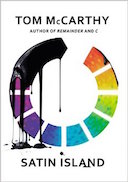
You know the saying: When modernity hands you monocultural beetroots, make lemonade. That’s what U., the protagonist and narrator of “Satin Island,” the smart, shimmering and thought-provoking new novel by the British writer Tom McCarthy, is attempting to do when we first meet him.
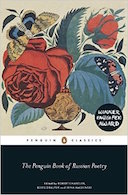
Be silent, hide away and let
your thoughts and longings rise and set
in the deep places of your heart.
Let dreams move silently as stars,
in wonder more than you can tell.
Let them fulfil you – and be still.
A holy war is being fought over a proposal to build a $500 million commercial development, on the rim of America's natural treasure.

If birds are made of air, as the nature writer Sy Montgomery says, then writing a great bird book is a little like dusting for the fingerprints of a ghost. It calls for poetry and science, conjuring and evidence. In her breathtaking new book, “H Is for Hawk,” winner of the Samuel Johnson Prize and the Costa Book Award, Helen Macdonald renders an indelible impression of a raptor’s fierce essence — and her own — with words that mimic feathers, so impossibly pretty we don’t notice their astonishing engineering.
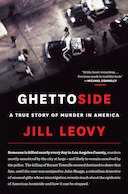
Los Angeles Times reporter Jill Leovy has spent more than a decade in her city’s most dangerous black neighborhoods, with killers who are more scared and embarrassed than they are brutal; mothers who do everything they can but still lose their kids to the streets anyway; neighborhoods wracked by violence, where nearly everybody is a good person trying to do right; dead and wounded who are no more drug dealers and gang members than they are saints; adolescent hookers with more courage than most cops; cops who see their responsibility to protect the neighborhood as a holy mission. She brings them all to life with grace and artistry, and controlled — but bone-deep — outrage in her new book, “Ghettoside.”
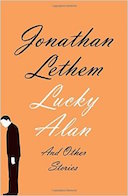
Lethem works in an interesting literary space between realism and absurdism, modernism and postmodernism, satire and a particular brand of DeLillo-inspired darkness. Reading him at this midpoint in his career, I sometimes feel he is on the cusp of a breakthrough that hasn’t occurred. His talent is large and, as these stories demonstrate, his eye as sharp as ever. What I have missed in his novels, however, is a certain animal force. Amid all the virtuosity and inventive riffs, one yearns for a deeper drive — like the orcas in “Pending Vegan,” with “their absolute and devastating presence.” They are putting on a show, of course, these killer whales, confined in a restricted pool of water, trained circus animals essentially, but with the peril of their wildness intact.
"We're doing what we do best," Harold Green explains. "Absolutely fucking nothing."
The eight men burst out laughing. They are extras, but not just any extras. They are commercial extras, and for them life is good.
"It's almost like stealing," says Green, a squat 63-year-old who looks vaguely like Ernest Borgnine. "You come to set. Half the time you don't do anything. We come in, eat breakfast, eat craft service all day and look forward to lunch. We just had yogurt parfaits. 'Cause we hadn't eaten in half an hour!"

The BBC had for decades helped to define Britain, yet by the late 80s, the Corporation was all too often the story, vulnerable to new commercial and political models, its capacity to exercise political balance tested by three Conservative election victories. Old sentimental certainties fell. Traditional restraints on the power of the British government appeared no longer to work.
The people writing and watching these movies are all part of an introspective, if not isolationist, culture that’s still licking its wounds after plotless wars and a traumatic recession. Those who choose to stay express a steadfast commitment to a cause, a family or a discipline — or (when it goes wrong) to lethargy, inertia and abstinence from action.
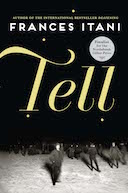
Frances Itani’s new novel, “Tell,” is a story of tightly gathered emotions set in a small town on Lake Ontario just after World War I. A follow-up to “Deafening” (2003), the book features on its cover an antique photograph of ice skaters. Two figures face us, one sharp, paused and staring at the camera, while another, moving ahead of him, is a blurred ghost. In the distance, tiny glints of skate blades, coat buttons and human eyes prick the darkness — just enough to hint at how much is out there we can’t see.
When I read the poem now, I am struck by a kind of prescience in the elegiac lines, as if he were speaking his last words to the beloved, knowing how those of us who lost him must now abide.
Yet resist we should. We should resist not just because Many Worlds Interpretation (MWI) is unlikely to be true, or even because, since no one knows how to test it, the idea is perhaps not truly scientific at all. Those are valid criticisms, but the main reason we should hold out is that it is incoherent, both philosophically and logically. There could be no better contender for Wolfgang Pauli’s famous put-down: it is not even wrong.
And yet, it attracts both publicity and extraordinarily confident endorsement. Why? To understand that, we need to see why, more than 100 years after quantum theory was first conceived, experts are still gathering to debate what it means.
The most dazzling, most unsettling, most oh-my-God-listen-up novel you’ll read this year is called “Welcome to Braggsville.” The 44-year-old author, T. Geronimo Johnson, plays cultural criticism like it’s acid jazz. His shockingly funny story pricks every nerve of the American body politic. Arriving smack dab in the middle of Black History Month — our shortest month, naturally — “Braggsville” lashes self-satisfied liberals in the academy and self-deluded Confederates in the attic. As we feign surprise at police brutality and our Twitter outrage flits from Ferguson to Staten Island to Cleveland, this is just the discomfiting book we need.
Sisyphus decides—why not—
to let go of the stone he’s been rolling
up a hill for what seems like forever.
And so one welcomes the multitalented Miranda July to the land of novel-writing. She is difficult to categorize. She is between generations. She believes in psychic connection, the spiritually purifying aspects of passion, the porousness of the self. Her lines sing. She can sing. She doesn’t know that much about narrative structure. No one belongs here more than she.

In the current issue of The New York Review of Books, in an essay about the films and fiction of Miranda July, Lorrie Moore writes, “We don’t always know what intimate life consists of until novels tell us.”
Helen Macdonald’s beautiful and nearly feral first book, “H Is for Hawk,” reminds us that excellent nature writing can lay bare some of the intimacies of the wild world as well. Her book is so good that, at times, it hurt me to read it. It draws blood, in ways that seem curative.

Warga's book could stand to be more artful, but at least it fundamentally understands the weight of depression, and the disconnects that come because people find it so hard to understand each other. Without underlining the point, she gets across that other people's lives, and deaths will always be something of a mystery.
Mr. Enrique, 37, is a leader in a movement of loosely affiliated Puerto Rican cooks, farmers and activists who have arrived at the same realization over the last few years: There’s a juicy gastronomic paradise at their fingertips, and all they have to do is reach out and grab it. San Juan restaurants like Parcela Gastropub, La Jaquita Baya, Santaella, Marmalade and Jose Enrique (the chef’s namesake spot in the humming Santurce neighborhood); a pioneering farm-to-tote-bag enterprise called El Departamento de la Comida; and the Hacienda San Pedro coffee company are all promulgating a new way of thinking that reintroduces Puerto Rican diners and shoppers to the buried treasures of their home island.
Two beliefs safely inhabit the canon of contemporary thinking about journalism. The first is that the Internet is the most powerful force disrupting the news media. The second is that the Internet and the communication and information tools it has spawned—like YouTube, Twitter, or Facebook—are shifting power from governments to civil society and to individual bloggers, netizens, or citizen journalists.
It is hard to disagree with these two beliefs. Yet they obscure evidence that governments are having as much success as the Internet in disrupting independent media and determining what information reaches society. Moreover, in many poor countries or in those with autocratic regimes, government actions are more important than the Internet in defining how information is produced and consumed, and by whom.
In this bewildering world we have to decide what to believe and how to act on that. In principle that’s what science is for. “Science is not a body of facts,” says geophysicist Marcia McNutt, who once headed the U.S. Geological Survey and is now editor of Science, the prestigious journal. “Science is a method for deciding whether what we choose to believe has a basis in the laws of nature or not.” But that method doesn’t come naturally to most of us. And so we run into trouble, again and again.

Classical physicists believed the discontinuous quantum was a mere computational trick, but rather than fade away as expected, the mysterious energy packets started popping up in more and more places. In 1905, Einstein demonstrated that the quantum explained the photoelectric effect and the strange phenomenon known as Brownian motion. Some years later, a young Niels Bohr came up with a model of the atom in which electrons moved between specified “orbits” when they absorbed or emitted energy quanta. The unwelcome interloper, it seemed, was here to stay.
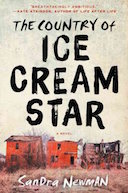
Don't fight, because this book is just too good. Don't fight, because it would be a shame for the beauty and the power of Ice Cream Star (both the novel and its namesake main character) to get lost in a flood of bickering over who gets to write what about who, and where to shelve a book that reads more than a little bit like a bloody indictment of the entire post-apocalyptic YA genre. Just read it, and sink into it, and let it crawl into your head before you make your judgements.
A bad meal out might ruin your night, but the ordeal could leave you traumatised too, according to linguists who analysed hundreds of thousands of online reviews.
Diners who left one-star reviews on the website Yelp adopted the same phrases as trauma victims, using the past tense to distance themselves from the event, and terms such as “we” and “us” to share the pain, researchers said.

Like Helen Macdonald’s H is for Hawk, and Richard Mabey’s Nature Cure before it, Katharine Norbury’s The Fish Ladder is at heart an examination of the consoling effect of the natural world on human grief and torment. Having lost a longed-for baby she was carrying, Norbury sets out, sometimes accompanied by her young daughter, Evie, on a series of walks, attempting to follow various rivers from the sea to their source. The spur for all this watery tramping is quite specific. She has fallen in love with Neil M Gunn’s novel The Well at the World’s End, whose hero, Peter Munro, wanders impulsively in Scotland’s wildest places in search of the nameless spring of the book’s title. Thanks to this, her most significant expedition sees her travelling north of the border to Caithness on the trail of the source of the Dunbeath Water, the inspiration for another of Gunn’s books, Highland River. Norbury cannot wholly account for her yearning to see this unknown place; all she knows is that, bafflingly, it feels as acute as homesickness.
Imagine being in a foreign airport with your father, and your sister is somewhere in the same airport in a coffin waiting for you to fly her home, but the airport is fogbound and heaving with unhappy souls and you are given hours and then days to contemplate her death and your life. This is the plot, such as it is, of Greg Baxter’s second novel. The airport in question is Munich, and the fog is a confusion that seeps into the whole novel — Baxter is the fog machine and we the readers are also fogbound.
The man always sat in the same seat, the stool farthest down the counter. When it wasn’t occupied, that is, but it was nearly always free. The bar was seldom crowded, and that particular seat was the most inconspicuous and the least comfortable. A staircase in the back made the ceiling slanted and low, so it was hard to stand up there without bumping your head. The man was tall, yet, for some reason, preferred that cramped, narrow spot.
In China, traditional opera was banned under the Cultural Revolution, but after it ended there was a rush to rebuild this three-hundred-year-old art form, a unique part of China’s cultural heritage. The government supported its revival and today all the repertory exists, and it is thriving.” American dance has never suffered a similar violent rupture with its past, but, in a way, the slow death brought by time can be even more definitive. Taylor can’t change this, of course, but if he can bring a few of these dances to a wider audience so much the better.
As someone who had also been through a divorce himself, making a few unscheduled stops in hell before coming back, he was impassioned. He explained that everything — every relationship, every person, every job — has its time in life, and then, as he noted, all of a sudden it doesn’t. He told me I could feel sorry for myself that something was ending, or be excited and appreciative that it had ever even existed.
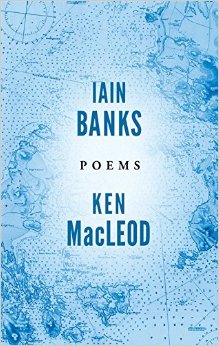
To Hugo, it was all at first a bewildering blur. He found himself focusing on the strangeness of the elevators in Quito when he went with his family and Detore to ask for a visa; on the terrible cold there; on the lights that for some reason burned all night.
To the village leaders, it was the first move in what became a deliberate, long-term strategy, the hope of a tiny nation on the edge of extinction. To save the Cofán way of life, they decided, their children would have to leave it. They would have to become something not quite Cofán. Something new.
But the kind of writing that speaks most deeply to me requires a kind of ruthlessness and control that are antithetical to catharsis for the creator, if not the reader. To be asked if my writing is a form of catharsis annoys me, because it annexes the territory of literature under the flag of therapy. As anyone who has written a book knows, there are a thousand other, easier ways to make oneself feel better: alcohol, masturbation, adopting a dog. For “survivors of suicide,” as we’re known—a phrase that I’ve always found most peculiar, as if we’d tried it ourselves but the noose slipped, the cartridge jammed—closure is little more than a neat idea.

Despite his digital predilections, Topol is a humane and sympathetic observer of the plight of patients in our highly dysfunctional health care system. We can only hope mobile devices will help them better navigate (or scroll) their way through this perilous terrain.
But using a slow cooker is, at its best, an exercise in vague worry, if only occasional vigilance. Its value as a kitchen tool degrades quickly after six to seven hours. It is not for when you are at work, or sleeping. It is best for afternoon cooking while a game or opera plays on the radio, for while you’re doing chores or running errands, or for using in the evening for a meal you’ll finish cooking before bed, and consume later. It is excellent for making stock.

Tonight, like every weeknight, the plant will print more than 300,000 copies—double that on the weekend—which by 3:25 a.m. have to be loaded onto dozens of trucks. The straight trucks, which are already at the loading docks, can fit eight pallets each, holding a total of 14,000 individual copies. The trailer trucks carry twenty-four pallets, a load of 50,000 copies. The trucks will make about eighty departures from the plant by tomorrow morning, fanning out to other distribution points, from which the copies will be delivered to grocery stores, bodegas, office buildings, and newsstands from New Haven to Albany to Trenton. Booth used to spend his nights waiting for the trucks to arrive—he had a Times paper route in the Riverdale section of the Bronx starting in 1986, when his daughter was born and he needed extra income.
Booth got here at 4 p.m. and will work until the last truck leaves. "Sometimes we'll get out at 3, sometimes we'll get out at 7," he says. "You're dealing with night people—we're vampires here." Tomorrow morning, most readers will think nothing of the fact that the paper was at their door at the same time yesterday and the day before that and the day before that. They may also think nothing of the fact that, at the moment they bend down to pick it up, some of the stories in the print version have already been updated on their phones and tablets, and new stories have been added, too: the score of a double-overtime game that ended too late, or news out of India that broke overnight. And all of these stories, the total daily and nightly output from all the desks at the Times—news from Washington and Ukraine and Sacramento and St. Louis and Staten Island and Mexico City, reviews of movies that open tomorrow and of TV shows that aired last night, opinion pieces, recipes, weekly sections on home design and science and real estate and style and books—feed a larger world of news that never stops consuming. The growing universe of digital news outlets includes a great many amalgamators, recyclers of other people's reporting. Some report their own stories, but it is the Times that provides by far the most coverage of the most subjects in the most reliable way. The Times is a monster, a sprawling organization, the most influential print newspaper and digital news site in the world.
Photo: New York Times by Samchills (CC BY 2.0)
“Forget all that” was the advice I got from my globe-trotting friends. If you visit the island, they said, do two things. First, go to Kota Kinabalu (or KK as it’s known), the capital of Malaysia’s Sabah state, located on Borneo’s northwest coast, facing the South China Sea. “Hands down the most lively city on the island,” one said about this city of around 450,000 people that is choked with moped traffic and has more malls and cinemas than there could possibly be demand for. Second, they said, when you get to KK, don’t be a typical tourist.
The result of this tension is an uneasy two-way xenophobia, with each side accusing the other of racism even though both are Han Chinese. Predictably, this has led to a reassertion of cultural identities.
It is often a man, and his offense is measuring every ingredient — whether butter for toast, cream cheese for a sandwich or rice for chicken soup — with a chemist’s precision; scraping measuring spoons and cups level with a knife and eyeing them skeptically; checking that everything was done right; then bravely doing it all again and again until the meal is made. I was certain that this character was invented, until I learned I was wrong.

Cheryl Glickman, the narrator of Miranda July’s strenuously quirky first novel, is a peculiar woman of peculiar habits who works at a business with peculiar customs. So it comes as little surprise when she finds herself saddled with a house guest who is also rather odd. Eccentricities, as uncountable as the sands of the Sahara, drift and blow through this book, piling up in dunes that must be scaled by characters and readers alike.
Between pauper's bibles and the modern graphic novel, there's Frans Masereel's My Book of Hours – a crucial example of the power of stories without words.
They show us other qualities, qualities that have nothing to do with the game, such as fluid ease, rhythm, balance, harmony, grace. They are beyond athletes, just as Copeland and Polunin and other dancers are. They are artists. How fortunate for the rest of us.
The world around us is changing at a rate we’ve never previously experienced, with climate change and human activity reshaping whole regions. Extinction rates are on the increase, with many subjects of loved children’s books set to vanish from the wild within a generation.
As sad a prospect as this is, it is also something that travel companies are seeking to capitalise on. Since 2008 companies have been offering packages for experiences that may not be around for much longer.

Dessert can be delicious. And it can be profitable, too. But generally speaking, when diners extend their meal with slices of chocolate cake, cups of ice cream, and servings of crème brûlée, it can come at restaurants' expense.
"It's hard to make money on desserts in the restaurant business today," said Tyler Cowen, an economics professor at George Mason University who has written extensively about the economics of eating out. "I don't think many [restaurants] benefit when people order them anymore."
Photo: chocolate cake for today's dessert by Hideya HAMANO (CC BY-NC-ND 2.0)
How reliable is human memory? Most of us believe that our memory is like a video camera, capturing an accurate record that can be reviewed at a later date.
But the truth is our memories can deceive us — and they often do.
Islamic craftsmen and artists – who were prohibited from making representations of people in holy sites – developed an instantly recognizable aesthetic based on repeated geometrical shapes.
The mathematical elegance of these designs is that no matter how elaborate they are, they are always based on grids constructed using only a ruler and a pair of compasses.

But what makes the novel so fascinating — and, yes, so challenging — is the language Newman has created for Ice Cream and the way we see this disease-ravaged world through her eyes:
“Days that come been clean bonesse. We keep to 495, a highway broad as any field. Got a twin highway the same, these two companion faithful. Together, they go stretch and snake across all unkept distance, till they find our new Connecticut. All this way be forest. Ain’t scarcely notice when the Massa woods be left, and yonder start. A hummock seem familiar in your eye; then it come queery that the individual trees be strangers.”
A FORM, as any taper, fine;
A head like half-pint bason;
Where golden cords, and bands entwine,
As rich as fleece of JASON.
Author’s book tours are not new, of course, and in fact are on the decline as rising costs and diminishing returns have rendered them increasingly prohibitive. And readers have been interacting with authors since there were authors and readers.
What is new, however, is a book tour accompanied by the author’s own Twitter stream (William Gibson is @GreatDismal), to say nothing of the many hundreds of fans and followers who have Tweeted, Facebooked, Tumbled, Snapchatted, Vined, YouTubed, and Instagrammed his appearances.
After the Second World War, the borough of Bergenfield built one of the nation’s first pre-planned suburbs featuring shopping malls; the county is now a megapalooza of outlet malls and big-box stores for shoppers, many of them from New York. Yet, by the late nineteen-fifties, Bergenites had begun to place prohibitions on Sunday sales. At the time, such “blue laws”—historians say that the term stems from the color of paper Puritans used to print their Sunday trading laws, or else from a slang term for Puritanism in that era—were common across the United States. Today, Bergen is their last redoubt. If its blue laws fall, so does America’s last true sabbath from shopping.

To read Alejandro Zambra is to engage with someone who writes as though the burden of history were upon him and no one else — the history of his country of Chile, of literature, and of humanity's shared experience. You get it from his pages, a sense that a story must be told, intimately and without reservation.
Dale had been doing a lot of reading on Hellenic myth, so when he said he had a surprise for us at his Pumpkin Jamboree we knew he wasn’t screwing around. The jamboree—a weekend he organizes on his property to bring the town together and raise a little money for the Fire Department—features a hayride, face painting, and a cakewalk that occupies the entire side yard, but his corn maze tends to be the highlight.
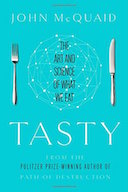
No health benefit explains the other great mystery of chili heat: why people enjoy the pain and irritation. Like the affection for a hint of bitterness in cuisine, it’s the result of conditioning. But there are no contests to brew the world’s bitterest coffee. The chili sensation mimics that of physical heat, which has been a constant element of flavor since the invention of the cooking fire a million or more years ago; we evolved liking hot food. The chili sensation also resembles that of cold, which is also unpleasant to the skin, but pleasurable in drinks and ice cream, probably because we’ve developed an association between cooling off and the slaking of thirst. But none of these examples explains why, when nature devised capsaicin to repel, humans embraced it in spite of itself.

Teachers and their unions have resisted standardized testing since the early 20th century. Their critics have claimed they do so because they fear being held accountable for how much children learn. But over the past few years, on both the right and the left, in scattered suburbs and in urban neighborhoods, a small yet growing group of parents have begun to join teachers in denouncing standardized testing. They complain about the narrowing of the school curriculum to the questions asked on high-stakes exams, the many hours and days — sometimes up to a quarter of the school year — spent testing and prepping for tests, and the stress that testing imposes on children. Some parents even have their children opt out of standardized testing altogether.
What is a letter, after all, if not -- as Steinke suggests in an email -- “a piece of writing directed at a single soul”? Still, what does it mean to share that (or aspire to) with a wider audience?
Yet today’s scientists are utterly surrounded by Anglophonia, and the rapid churn and ferment of scientific research shortens disciplinary memories. Wasn’t science always this way? No, it was not, but only much older scientists recall how it used to be. Often, scientists or humanists assume that English science replaced monoglot German, preceded by French and then by Latin in a ribbon that unfurls back to the dawn of Western science, which they understand to have been conducted in monoglot Greek. Understanding the history of science as a chain of monolingual transfers has a certain superficial appeal, but it isn’t true. Never was.

Looking for a lover? Put down that comb, because it doesn’t matter how hot you are. “Actually,” Hannah Fry explains in “The Mathematics of Love,” “having some people think you are ugly can work in your favor.” For online dating, you can even stop fretting over your profile photo. Doing what most people do — hiding what makes you look unattractive — is exactly what you shouldn’t do. “When choosing a profile picture, you should play up to whatever makes you different — including the things that some people might not like,” Fry counsels. “So be proud of that bald patch, show off that ill-advised tattoo, and get that belly out.”
“Justin,” Crews said, “I am so sorry …”
And then for a moment—less than a moment—I thought it might be a fake-out. That Crews might say something like, “I am so sorry that you’re going to be paying a lot of taxes this year, because you just won $500,000!”
But it wasn’t a feint. I had given the wrong answer. I had lost $225,000 in about 10 seconds. My time on Who Wants to Be a Millionaire? had come to an end.
The food we found in these suburbs was not only more Chinese than “Chinese” food of the take-out sort—it was more Chinese than Chinatown food. We rarely drove to San Francisco’s Chinatown anymore; the things my parents craved couldn’t be found there. The urban Chinatown—with its tourists and souvenir lipstick holders and monochromatic chow mein—was no more familiar to my parents than the lazy sprawl of California’s suburbs. But the latter, where you could run into classmates from Taiwan or dorm mates from Illinois, afforded them more space to think about things—was this “home” now? What more could you want?
On a recent Wednesday night, the artist Richard McGuire discussed his new book, “Here,” with Bill Kartalopoulos, the editor of the Best American Comics series, at 192 Books, on Tenth Avenue. “Here” is an intimate view of a fixed space over time—a corner of a living room, or the space in the world it occupies—spanning millions of years, in styles ranging from comic art to illustration to watercolor. Scenes often show multiple time periods simultaneously, through the use of frames, and cultural echoes appear in close proximity: a boy near a couch, in 1950, wearing a feather headdress and standing next to a small teepee; Lenape Indians joking and flirting in the woods in 1609. The deep past (fires, swamps) and the far-out future (catastrophic sea levels, holograms) have gently rendered notes of the Biblical and the apocalyptic. The inclusiveness of McGuire’s approach, and his careful observational humor, feels affectionate and empathetic.
Bills, garbage duty, cleaning up after dinner—living together will test any couple’s bond. But the act of combining bookshelves supplies its own revelations.

"The more I visit libraries the more I find myself opening up to them," writes Ander Monson in his essay collection Letter to a Future Lover. It's not surprising that an author would be attracted to libraries; they are, after all, some of the last places in the world dedicated to the preservation and celebration of literature. They're also at risk of becoming endangered, casualties of budget cuts, increased Internet availability, and apathy.
I’ve heard it said that many physicists in the academy groan at the very mention of Smolin’s name. But if he is wrong, he may at least be wrong in an interesting way. Strikingly, Smolin believes the reinstatement of time has implications for our daily lives. “If the flow of time is not an illusion, it makes our lives more precious and valuable,” he says. This might not seem as consoling as Einstein’s view that death does not have the finality we think it does. But if the laws of physics can change and evolve, so too can the space of possible futures. “The impression that we have that we can create novelty is true,” says Smolin. “This makes the universe much more hospitable. We can have free will. We have choices. I find that a much more comforting idea.”
It’s true. We might never conquer our struggles. And yet we must, with every last breath we take, try, and try again. They may stymie and thwart and beset us—but we must never let them defeat us. They truly defeat us when they make us small, mean, grasping people. And we truly conquer them when we grow into greatness. That is why they are here. And that is why we are, too.
Breathe. Look up. See the mountain. Accept the gift.
“Well, you’re just special. You’re American,” remarked my colleague, smirking from across the coffee table. My other Finnish coworkers, from the school in Helsinki where I teach, nodded in agreement. They had just finished critiquing one of my habits, and they could see that I was on the defensive.
I threw my hands up and snapped, “You’re accusing me of being too friendly? Is that really such a bad thing?”
“Are these real concerns? Is this work convincing?”
Behind all the other questions one asks oneself about a novel, these are perhaps the most determining—and the most slippery. Probably we should accept that in many cases a straight yes-or-no answer just won’t be possible. There will be shades of gray. Still, the matter of whether a work of fiction—its setting and characters, its interactions and preoccupations, etc.—feels “authentic” may have much to do with how we ultimately judge it, whether we like it, whether we take it seriously. But what do we mean by authenticity? Since we can hardly ask for documentary accuracy from fiction, what is it exactly we’re looking for?
A new book, On the Edge by Prof Robert Duck, looks at the history of coastal railways, the impact they've had on the environment and on the people who live beside them and travel on them, and at what the future may hold.
If anything, the fervor of the Janeites puts into relief a fact almost too obvious to notice: the world of books is a romantic world. Romance structures literary life, and to be a reader is, often, to follow its choreography, from susceptibility and discovery (“I just saw it there in the bookstore!”) to infatuation, intimacy, identification, and obsession. We connect with books in an intellectual way, but the most valuable relationships we have with them are emotional; to say that you merely admire or respect a book is, on some level, to insult it. Feelings are so fundamental to literary life that it can be hard to imagine a way of relating to literature that doesn’t involve loving it. Without all those emotions, what would reading be?
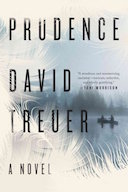
It's that paradox, that binding of the familiar to the surprising, that guides the novel into the darkest nooks of the characters' minds, and in so doing dredges up an unlikely sympathy. By taking us one step backward for every two steps forward, Treuer doesn't just unravel the plot we might expect; he prompts us to interrogate the assumptions — racial, sexual and otherwise — that build up those expectations in the first place.
But the lexicographic kerfuffle, thank goodness, isn’t dead. Instead of arriving cloaked in a schoolmarm’s petticoats, it comes now bristling with righteous, if polite, indignation over society’s continuing plunge into a digital abyss.
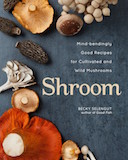
When I test a single-subject cookbook, it often happens that I’m heartily sick of the star ingredient after a week. I don’t know whether it was because mushrooms are so diverse in character or because Selengut’s multicultural portraits in fungi were so charmingly different each one from the next. But by the time I got to the end of “Shroom,” I was perfectly prepared to go back and start right in at the beginning again. If that’s not the definition of a keeper, I don’t know what is.
A century ago, people worried that color would ruin motion pictures; instead, it changed visual narratives forever.
There are as many worlds as there are dreams. Not every world matters. But every dream does. Close your eyes. Breathe. Imagine.
Leave it to Nick Hornby to produce a smart comic novel that pits light entertainment against serious art and comes through as winning proof of the possibility of combining the two.

With Happy are the Happy, Reza has pulled off something both unexpected and magical in a very small book that packs a real punch.
There is a deep, unhealed historical wound in the UK's relations with China - a wound that most British people know nothing about, but which causes China great pain. It stems from the destruction in 1860 of the country's most beautiful palace.
“I drew my first breath on the 28th January, 1935, which was quite a good time for a future writer to be born in England.” The “quite” in the opening line of this memoir is characteristic – David Lodge has never been one to overstate his case. The memoir, published to coincide with his 80th birthday, is a portrait of the novelist as a young man, and James Joyce – along with Graham Greene, Evelyn Waugh and Kingsley Amis – turns out to be one of the writers who made him want to write.
I am the wife. I am the wife of fifteen years. I am the plumpish wife, the pretty wife, the loving wife, the smart wife, the American wife. I am eternally his wife.
Perhaps the story begins with the fistful of lottery tickets he bought two days before he died, which I discovered weeks later, when they fluttered out of the pages of one of the many books he was reading.

A new book from NUS Press offers a compelling — and entertaining — view of Singapore’s environment, offering stories of tiger attacks and trade wars — as well the botany and ecology a reader needs to understand more than 200 years of continual, and sometimes disastrous, change on the island.
It’s not my fault. So you can’t blame me. I didn’t do it and have no idea how it happened. It didn’t take more than an hour after they pulled her out from between my legs for me to realize something was wrong. Really wrong. She was so black she scared me. Midnight black, Sudanese black. I’m light-skinned, with good hair, what we call high yellow, and so is Lula Ann’s father. Ain’t nobody in my family anywhere near that color. Tar is the closest I can think of, yet her hair don’t go with the skin. It’s different—straight but curly, like the hair on those naked tribes in Australia. You might think she’s a throwback, but a throwback to what?
In the tiny Sussex village of Ripe, at the back of St John the Baptist churchyard, the novelist Malcolm Lowry lies buried. According to the inquest, the volatile author of Under the Volcano had taken to drinking gin at home after being banned from The Lamb, Ripe’s only pub. Lowry had difficulty walking in his final days, and banishment from his local must have been devastating. It is a dark irony that he might not have died from alcohol poisoning had he been allowed a civilised drink.

I had lived in Los Angeles for six months when I starting spending long hours in its cemeteries, drawn to them like a self-pitying moth to a lonely, maudlin flame. I still only had one friend in the city; I had expansive free time and no direction and no prospects. From the beginning, I had trouble reconciling my daily experience of Los Angeles — as a young and changing city; as green and mountainous; as an incredibly ethnically diverse city, with a culture and population that is predominantly Latino — with the sun-bleached, suburban sprawl-y, valley girlish, cultureless, entertainment-industry-glamorous idea I had of it before I moved here. Could these images coexist, both taking some share of the truth?
A verdict on whether to extend Boston’s one-year experiment with late-night service is expected soon. “What kind of major city — especially one that thinks it’s good enough to have the Olympics — has its entire public transportation system stop at midnight?” asks Malia Lazu, executive director of Future Boston Alliance, an organization that advocates for the city’s progressive growth and has long been pushing for late-night public transit. In a city with Olympic aspirations, a city with more than 150,000 college students keeping weird hours and piling into bars the rest of us haven’t even heard of, a city where artists and entrepreneurs work all night on things the rest of us need explained to us at least twice, can we all, under penalty of an expensive cab ride, be expected to be home by the MBTA’s version of a curfew?
Since ancient times, humans have sought to solve problems with technology, and they've often been inspired to do so by observing how animals and plants found elegant solutions to similar problems. In looking deeper into these solutions recently, scientists have been repeatedly astonished at the sophistication and optimal performance of evolutionary adaptations. They have discovered light sensors that can detect single photons, skin that can magically repel water, acoustic lenses that focus sound beams, and bugs that can solve calculus problems.
To put it plainly: we humans are increasingly realizing that nature offers a lot of great designs to steal.